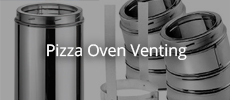Problems of the expanding inner oven cracking the outer oven shell can be largely avoided by the blanket layers acting as an expansion joint provided there is no direct contact between the inner and outer domes. The other problem is moisture that can create steam pressure build up, so slow elimination of moisture before the outer shell is built is prudent. As well as some kind of vent to allow steam pressure to be released should water enter into the insulation space. A visual inspection of any cracks in the outer shell is important as these can provide an entry point. Most commercial cement renders are partially waterproof in order to allow some moisture to pass because making it totally waterproof also locks moisture in. Your plan sounds reasonable. I only make the outer shell 12-15mm thick with a commercial cement render enriched with AR glass fibres applied in one go rather than multiple layers, primarily to save time. After sponging the surface to remove any tooling marks I then cover the whole oven in clingwrap to hold the moisture in the outer layer for a week to enhance its strength. After removing the clingwrap and a few more fires establish that the surface is dry I use flexible pointing watered down 20% so it can be applied by brush in 3 coats which results in a thick (about 1.5mm ) coating of very flexible impervious UV resistant layer. Other products may produce similar results. If you want an outer tiled layer you will need a suitable substrate and possibly a flexible tile grout.
I recently repaired one of my ovens that had a badly cracked outer shell caused by water entry into the insulation layers. Water had entered from the cracks and as they expanded the problem got worse because they slowed more water entry as they got wider. The remedy was lots of slow fires to first drive out the water leaving the cracks open to allow its escape. Then opening the cracks a little with the diamond blade, filling with render and recovering with the flexible pointing.
X
-
I just saw this post. I’m considering building a WFO. Was wondering what’s the consensus on this issue. I live in the northeast US and am subject to freeze thaw in the winter. So waterproofing is imperative (as best as possible). The town I live in won’t let me put a permanent roof structure over the oven so it will be exposed. I don’t want to use perlite or vermiculite in order to avoid introducing further moisture. It will be a Vesuvio design.
So I was gonna cover the dome in CF insulation then build the shape with 1/4” rebar and lathe. Then render. Then tile. Was gonna use glass pool tile (frost proof) and pool grout. I was gonna go with a storm collar at the bottom of the flue as well as a storm cap on top. Liberal use of high temp silicone caulk. November thru March will likely got some kind of insulated cover by Coversandall.com. but Beyond that I need some guidance.
So my questions are:
-stainless steel for the rebar/lathe to eliminate rust? Or is there too much of an expansion risk?
-best render that is waterproof AND vapor permeable?
-do I need weep holes if I go with 4” Skamol floor insulation? (Again my town doesn’t want to see a “permanent” masonry stand so we’ll have to fabricate a steel one)
Ive seen a host of products being mentioned here and was wondering what is recommended:
Thoroseal
Hydroban
Krystol
Flexcrete
Stucco Flex
Flexible Pointing Mortar
Any and all advice would be greatly appreciated.
Thank you
Mike
Leave a comment:
-
I doubt it. Commercial render/stucco has a degree of waterproofing added to it by the manufacturer. You can see this when you begin to mix water with it as it is difficult to get the water to penetrate the dry mix. This results in a partially waterproof layer that still allows moisture to pass, preventing most moisture getting in but still allowing moisture to get out. When mixing water with a 4:1:1:sand, lime and portland mix the water is sucked in immediately. A higher proportion of portland will reduce porosity but also results in a more brittle layer so is not advisable.The lime in the mix adds elasticity and some crack self-healing properties. In a standard brick wall both the bricks and the mortar are not totally waterproof. The bricks are usually only partly vitrified and therefore not totally waterproof.Originally posted by harper james View PostMy igloo design is currently nearing completion. As a final waterproof layer, would Specmix mortar (Portland, Lime, and Sand), which is a brick mortar and reportedly waterproof, work?
I like to add a totally waterproof coating over the cement rendered/stucco outer shell for igloo ovens that are are out in the weather. For ovens under a roof it would probably be better for the outer shell to be somewhat porous.
The product I use to totally waterproof ovens is "flexible pointing". This was developed in the 70s to coat the mortar on tiled roof ridge caps. Following its adoption roofers no longer have to repair ridge cap mortar cracks caused by expanding and contracting rooves. It has the quality of being an extremely elastic acrylic, high build and with lots go UV protection. Being relatively cheap compared to other compounds like bathroom under tile membranes, it is easily applied if watered down 20% so it can be brushed on in about 3 coats to leave a thickness of around 1.5mm. It also has the advantage of covering any tooling marks in the render.Last edited by david s; 07-14-2023, 04:00 PM.
Leave a comment:
-
My igloo design is currently nearing completion. As a final waterproof layer, would Specmix mortar (Portland, Lime, and Sand), which is a brick mortar and reportedly waterproof, work?
Leave a comment:
-
Worked well left out in rain lots of times during summer
Covered in winter (at cottage so unused)
In the end I used the flexcrete but before tiling I decided to a full coat of Mapei AquaDefense on it
Then 1" tiles using Kerabond/Keralastic
grout with Mapei UltraColor Plus FA
so everything is polymer based
goal is nothing is getting in there
probably still buy a custom tarp to cover in times when not there (ice is just such a worry in winter, don't want to have to rebuild anything)
going to submit a build thread eventually chronicling all the fun work, decisions etc
just about done (ran out of black tile ... oops)
Last edited by millerlake; 08-25-2018, 06:34 AM.
Leave a comment:
-
So last post is two years or so ago, but how did the flexcrete solution work out? Iím in Portland Oregon, looking at a tiled igloo finish on a Casa 90.
Leave a comment:
-
I ended up using Flexcrete (+polymer) from Lowes here (valcon industries) waterproof/breathable/flexible
seemed to tick all the right boxes
now to tile (well next year now)
Leave a comment:
-
Most proprietary cement renders are partially waterproof. You wil probably notice some difficulty to get to water mixing into the dry product when first beginning to mix it. This means it has got waterproofing in it. You can also add some acrylic additive like Bondcrete around 1 part to 2 parts water when mixing. This makes the render stronger and more workable. A 100% acrylic render which comes wet in a bucket not dry in a bag, can be applied over the cement render after it has cured to make it completely waterproof. I find it easiest to water the stuff down 20% so it can be painted on.
One school of thought is that the outer shell should be slightly porous so that moisture can escape through it. If completely waterproof the moisture will be locked inside. I prefer to make it completely waterproof and allow the moisture out via my vent.Last edited by david s; 08-08-2017, 02:12 PM.
Leave a comment:
-
Just getting to the finishing stages of my igloo design. I'm wondering if using Specmix mortar (Portland,lime and sand )which is a brick mortar and supposedly waterproof would work as a waterproof final layer
Leave a comment:
-
in hind-sight and if I had a chance to do it all over again, I'd choose option #4 - basically waterproof most of it, but leave plenty of ventable area. I think by doing this you could probably keep out 80-90% of the water, and would have no problem with it drying back out (either via time or warming fires).Originally posted by millerlake View PostSo this is all very interesting for me (trying to finish off last years project)
Finish: igloo and mosaic tile
Weather: Ontario Canada, so ice/snow in winter and rain of course
Likely will cover with tarp in winter
So current state is covered in matrilite19
I think the tile will be kerabond/keralisic dryset (ultraflex3 thinset)+ glass tile
So questions would be to make it as waterproof/breathable/crack resistant as possible
options any/all/some of
1 just add a scratch coat, tile, (seal?)
2 add vent(s) through to theCFB (top or sides would it really matter sure top might be better but need to figure out the right vent o no water issues?)
3 add a real wterproof layer of something like aquaDefense/redguard/ mapei smart + vent
4 or maybe add that waterproofing at the top 1/3 and bottom 1/3 leaving a slightly more breathable mid section where water will run off anyway
5 some other cementitous waterproof/breathable layer before tile? type-N concrete I think I saw is what Francis used?
any ideas and even better specific product recommendations would help
going back and forth on what to do
photo before CFB & matrilite layers
Leave a comment:
-
So this is all very interesting for me (trying to finish off last years project)
Finish: igloo and mosaic tile
Weather: Ontario Canada, so ice/snow in winter and rain of course
Likely will cover with tarp in winter
So current state is covered in matrilite19
I think the tile will be kerabond/keralisic dryset (ultraflex3 thinset)+ glass tile
So questions would be to make it as waterproof/breathable/crack resistant as possible
options any/all/some of
1 just add a scratch coat, tile, (seal?)
2 add vent(s) through to theCFB (top or sides would it really matter sure top might be better but need to figure out the right vent o no water issues?)
3 add a real wterproof layer of something like aquaDefense/redguard/ mapei smart + vent
4 or maybe add that waterproofing at the top 1/3 and bottom 1/3 leaving a slightly more breathable mid section where water will run off anyway
5 some other cementitous waterproof/breathable layer before tile? type-N concrete I think I saw is what Francis used?
any ideas and even better specific product recommendations would help
going back and forth on what to do
photo before CFB & matrilite layers
1 Photo
Leave a comment:
-
Dave, now *that's* a cool roof! I can't imagine getting that much rain, especially since we only get 8-12" per year on average. Since we're on the drier side of things, I'm planning on just dedicating a good waterproof tarp to sling over the oven whenever serious (if I can call it that) rain is forecast. Gotta love this forum. A lot of folks probably don't realize how truly valuable all of the old (even really old) posts can be, especially pictures, and especially to people like me that search & troll A LOT learning tons from others. Thanks!
Leave a comment:
-
Yes, that's right. Probably the best situation is to leave the outer shell unsealed, but have a roof over your oven. The problem with that solution is that it takes more expense and time which maybe more than you wanted just for an outdoor cooker. My oven is in the weather and after heavy rain and humidity (we live in the tropics), the oven gets wet and needs a few fires to dry it out. In fact even if it hasn't rained but the humidity is really high for a prolonged period with no oven use, the thing is still damp and the insulation is not as effective, ie it's hot to touch on the outside rather than just cosy warm. I'd prefer to dry it out a bit rather than build a dedicated roof though, especially as you have a flue pipe penetrating a roof. Or you could build one of these.https://community.fornobravo.com/for...670#post395670Originally posted by johnnybrewmeister View PostThanks Dave for the PM, and others for the details. So regarding the vent tube, it seems that if I did seal the dome with something like Tyvek, then a vent tube would be a smart idea. But if I don't seal it (which is where I'm leaning), since stucco passes water (and therefore water vapor), then there would be no need for the vent tube - the whole stucco dome would vent.
Sorry if I'm being thick-skulled here, but at least I'm learning alot.
DaveLast edited by david s; 03-21-2017, 03:03 PM.
Leave a comment:
-
Thanks Dave for the PM, and others for the details. So regarding the vent tube, it seems that if I did seal the dome with something like Tyvek, then a vent tube would be a smart idea. But if I don't seal it (which is where I'm leaning), since stucco passes water (and therefore water vapor), then there would be no need for the vent tube - the whole stucco dome would vent.
Sorry if I'm being thick-skulled here, but at least I'm learning alot.
Leave a comment:
-
Vents in dome
Gastagg
David S
Gulf
Utahbeehiver - me
a host of others but can't recall exactly who.
But this is up to you. Since I believe you are not enclosing the oven in a structure and the dome will be seen you are probably wanting to minimize potential cracking of the stucco. Both Gulf and I and several inches of p/v-crete over our CFB so there was water to get removed.David's is vent is unique since it is built in the vent stack. Gastagg's is some copper tubing near the front of the dome.
Leave a comment:






Leave a comment: